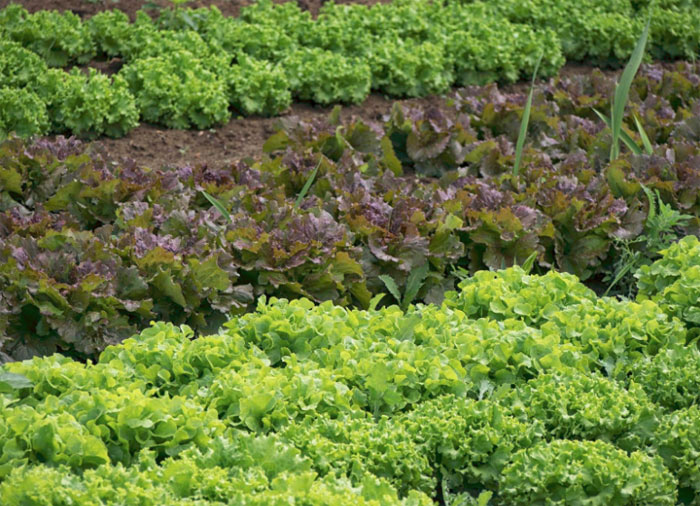Starting your own veggie garden is the best way to save money because even a single tomato plant can give you ten pounds of fruit in one season. Moreover, growing your own food can be fun as it lets you spend time in the sun. Here are some steps that will help you to start your own garden:

Decide What to Plant
Deciding which vegetables to plant should not be difficult. If you make the right plans, you can start enjoying food from your own raised bed garden without spending hours tending to it. If you have never planted anything before, starting small is a good idea.
Many gardeners become too excited at the start of the season and plant many warm-season veggies. Before you do this, you should determine how much food you and your family need. Remember that squash, tomatoes, and peppers will produce all through the season. On the other hand, carrots and corn will only produce once.
Figure out How Much Space You Need
When you decide what you want to plant, you should figure out how much space you need to plant it on. If you do not have an outside space to start your garden, you can always start planting veggies in containers. You do not even need an entire yard for this; a balcony or deck will provide more than enough space.
Pick the Right Spot
Most gardeners like to have potted veggie gardens close to their houses to make the work of harvesting easier. Moreover, keeping your herbs and vegetables next to the grill is convenient.
No matter what size your garden is, it needs to meet the following requirements:
Plenty of water – since most vegetables are not resistant to drought, you need to water them during dry spells. When coming up with a raised garden bed plan, you should place it near a source of water to make your work easier. This is especially true when planting warm-season vegetables such as peppers and tomatoes.
Full sun – when planting warm-season veggies, they will need at least 6-8 hours of direct sunlight. The temperature of the soil will keep your plants going by ensuring that they are resistant to disease and insects. You should plant your garden in an area that is under direct sunlight.
Good soil – with any garden, your success will depend on the type of soil. Most veggies thrive in well-drained, moist soil that is full of organic matter like compost. The temperature of the soil will also play an important role in keeping your plants alive and well. You can track this temperature using a thermometer.
Plan a Layout
 The way you plant your veggies is important and should be determined by the type of plants you are planting. The basic layout approaches are:
The way you plant your veggies is important and should be determined by the type of plants you are planting. The basic layout approaches are:
Row cropping – as a beginner, this is probably what you think about when you think about gardening for the first time. In row cropping, you plant seeds single file and leave a walking path between the rows. If your vegetable garden is large, you should opt for row cropping. However, if your garden is small, this technique will waste much space on footpaths.
Intensive cropping – in this method, you will group plants in wide bands. Intensive cropping reduces the need for paths and makes it easier to weed by hand because the plants will be close together. Due to the handwork needed, you should make the bands small to be comfortable enough to reach.
Test and Fix the Soil
Without the right soil conditions, your plants will suffer. For this reason, you should make sure that you test your soil by doing the following:
Soak soil and dig – you should start by soaking the soil using a hose then dig up a handful of it for testing.
Squeeze the soil – if water streams out of the soil, you need to add organic matter or compost to improve its drainage. You should also test the temperature of the soil to see whether its drainage is good.
Open your hand – if the soil falls apart after you open your hand, it is too sandy. You should add organic matter to make it less sandy. However, if the soil has formed a ball that breaks into crumbs when you poke it, it is good. If the soil does not drain properly, you should try using raised beds instead of sunken beds.
Dig Your Raised Garden
Once you ensure that your soil is in good condition, you should start digging. Before digging a sunken bed from scratch, you should follow these tips:
Loosen the soil – before you plant anything, you need to loosen the soil by hand or using a tiller.
Spread the soil – once you loosen the soil, you can add compost and work it into the soil.
Make sure that you do not step on the freshly tilled soil to avoid compacting it and undoing your hard work.
Smooth surface – when you finish digging, rake the soil so that the surface of the garden is smooth and level. Water your garden thoroughly. Make sure that you allow the soil to rest for a few days before you start planting.
Test the temperature of the soil – you can use a soil thermometer to test soil temperatures and ensure that the ground is ready for planting.
Get the Right Equipment
Just as you cannot go into a class without a pen and notebook, you cannot start gardening without the right tools. You need a rake, hoe, and shovel as well as other gardening tools. If you also have a lawn that you need to care for, you should invest in a good lawn mower. You can look at buying guides such as the reel mower buying guide to get an idea of what you need.
When you take good care of your garden, you will reap the benefits of home gardening by producing the best vegetables for you and your family. Instead of spending money on veggies, you will be growing your own produce and eating healthy meals.










